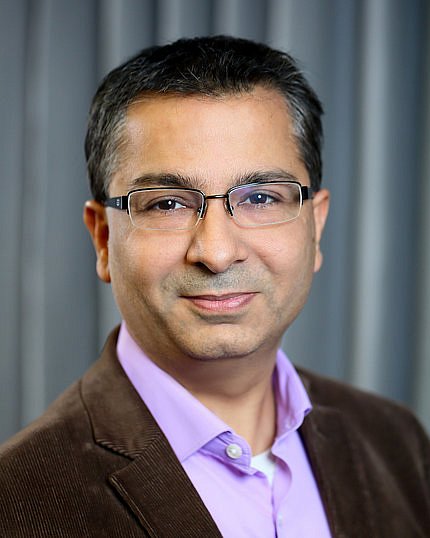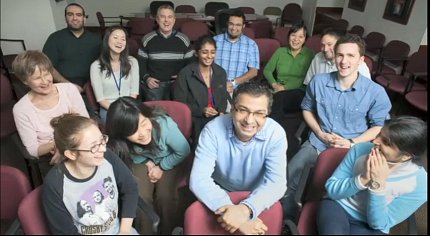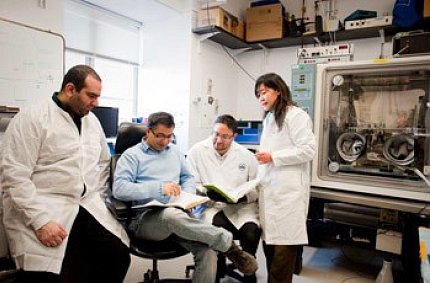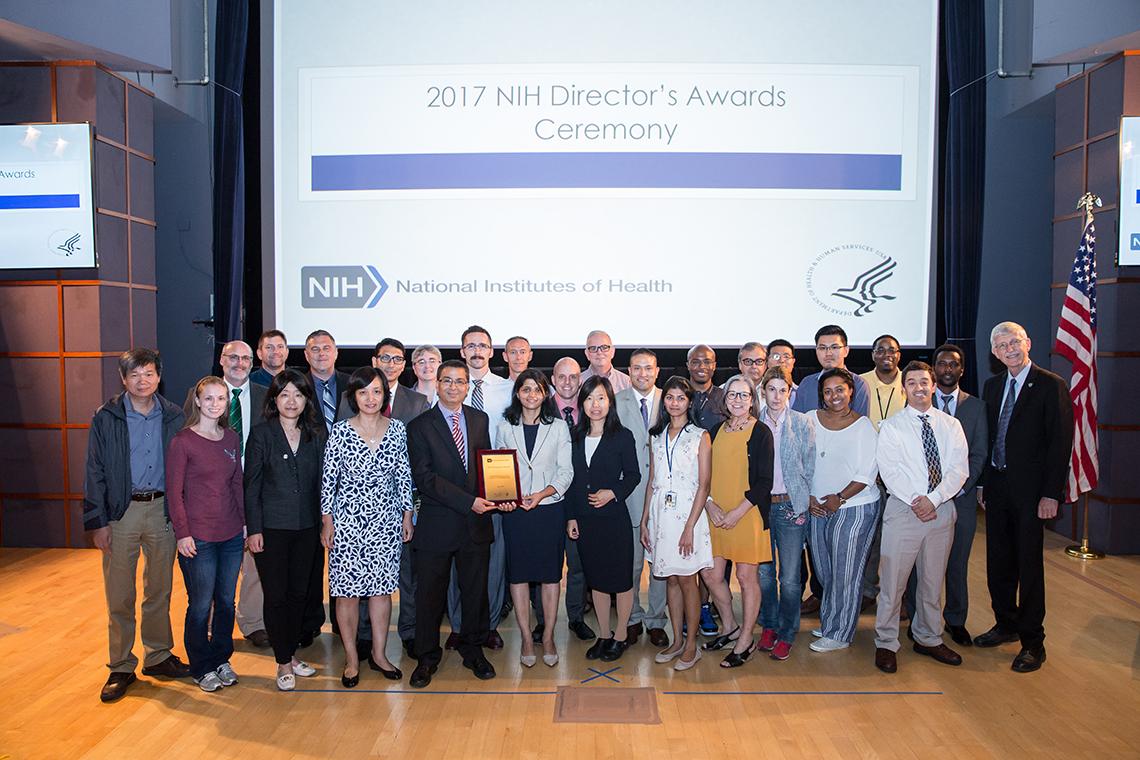Restoring Lost Vision
New Stem Cell Treatment Developed for AMD

Dr. Kapil Bharti of NEI is developing a stem cell-based therapy to prevent and restore vision loss caused by age-related macular degeneration (AMD). He spoke as part of the Sayer Vision Research Lecture Series, with his talk “Translating human RPE biology into disease treatments using induced pluri-potent stem cells.”
AMD typically occurs in individuals over age 65 and targets the retinal pigment epithelium (RPE) of the eye, which forms a monolayer of cells in the back of the eye and provides a secure base for light-sensing photoreceptors to grow on. There are two types of AMD—dry and wet—and Bharti’s new treatment applies to the dry form, which is more common.
In dry AMD, the cells that make up the RPE die off. Without the RPE to support them, photoreceptors also begin to die off, causing vision impairment.
“Symptoms of AMD start off as spotty vision in the center of your vision,” Bharti said, and progresses to the point where patients “lose a big chunk of their central vision and go blind in the center part of their vision.” It is estimated that 1 in 4 individuals over age 80 have some degree of AMD.
Before Bharti’s new stem cell-based therapy of transplanting a patch of RPE cells, AMD patients were treated by injecting new RPE cells in fluid suspension into the retina. This method was not ideal, because the evidence that cells assembled into a functional monolayer is limiting.
Bharti’s research has revealed a method to replace the RPE and its surrounding tissue: using induced pluripotent stem cells (iPS) that are made from the patient’s own blood cells. Naturally occurring pluripotent stem cells are found in embryos and differentiate into the numerous different types of cells in the human body as the embryo develops.

“iPS cells for all practical purposes are identical to embryonic stem cells,” Bharti said, “but the beauty is that we can make them in a dish.” The technique is fairly new but is often preferable for several reasons, such as to avoid the controversy surrounding embryonic stem cell use. iPS cells are also preferable to embryonic stem cells because they are sourced from the patient’s own body and therefore their derivatives are less likely to be rejected when transplanted back into patients.

Bharti and his team take blood cells from AMD patients, reprogram those cells into iPS cells and then give the iPS cells instructions to develop into RPE cells. To make a patch of RPE cells, Bharti and his team let RPE cells mature on a biodegradable scaffold. This entire process takes about 6 months to make fully mature RPE cells starting from patients’ own blood cells.
When it comes time for the new cells to be surgically transplanted into the patient’s eye, what remains of the biodegradable scaffold is implanted along with the cells, to provide structure as the cells integrate with the rest of the retina and grow on their own. Bharti has observed this newly grown layer “halt and reverse progression of disease.”
One of Bharti’s main hopes for this phase 1 trial is “to demonstrate that one can do clinical trials for patients using their own iPS cells, and then we can demonstrate that the patients’ own RPE patch can be delivered safely to the back of the eye, can stay and integrate safely to the back of the eye, and hopefully start functioning over time.”
In the future, he hopes to develop a technique to replace the entire retina, which will help patients with severe dry AMD that have little to no remaining RPE and photoreceptors.

Towards this aim, Bharti’s team also signals some cells to differentiate into photoreceptor and choroidal cells (a structure just behind the RPE) to make a fully functional 3-D-patch. The process is a slow one; component cells are 3-D printed as “bio-ink” onto a biodegradable scaffold, and these cells grow together to form a functional RPE with surrounding tissue as the scaffold breaks down.
View the entire lecture at https://www.youtube.com/watch?v=Vmad6JqmC-Q.
